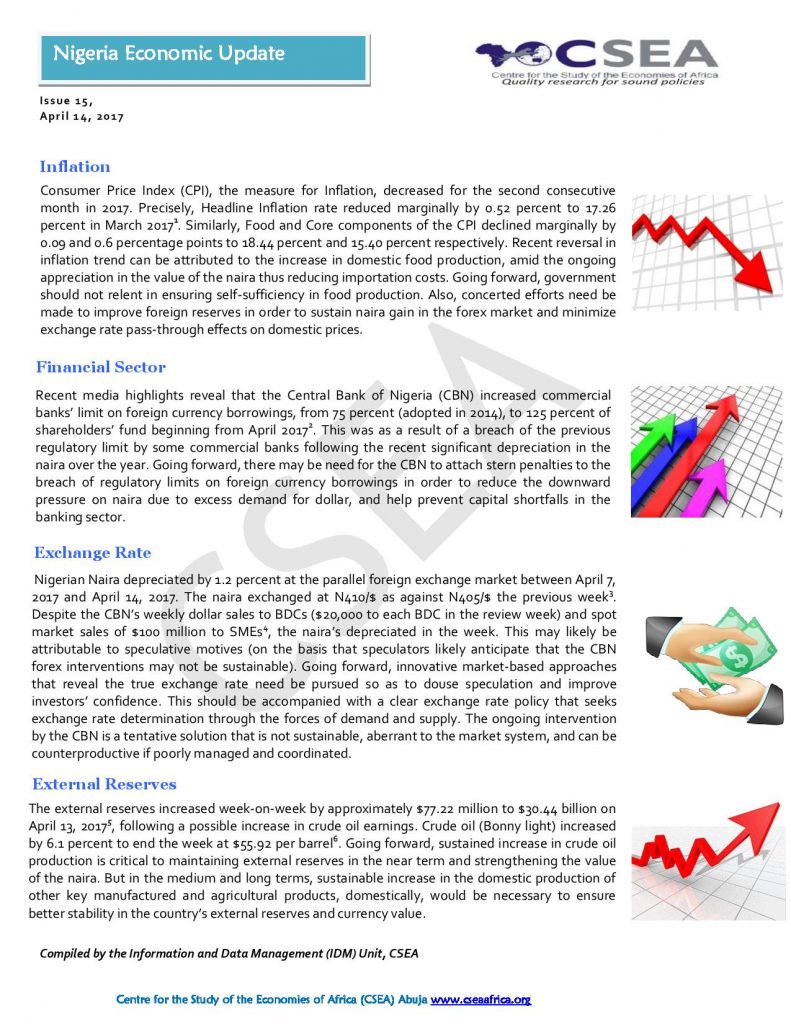Macroeconomic Report & Economic Updates

May 10, 2017
Nigeria Economic Update (Issue 15)
Nigerian
Naira depreciated by 1.2 percent at the parallel foreign exchange market
between April 7, 2017 and April 14, 2017. The naira exchanged at N410/$ as
against N405/$ the previous week. Despite the CBNs weekly dollar
sales to BDCs ($20,000 to each BDC in the review week) and spot market sales of
$100 million to SMEs, the nairas depreciated in the week. This may
likely be attributable to speculative motives (on the basis that speculators
likely anticipate that the CBN forex interventions may not be sustainable).
Related
Africa Economic Update (Issue 4)
International Monetary Fund (IMF) revised down growth forecast for Sub-Saharan Africa by 0.2 percentage points, while retaining growth estimates for Nigeria and South Africa in 2017. Precisely, growth rate forecast for Africa was reduced from 2.8 percent in January 2017 forecast to 2.6 percent in April 2017 forecast while growth estimates were retained at 0.8 percent for both South Africa and Nigeria. In contrast, global economic growth outlook was increased by 0.4 percentage points from 3.1 percent to 3.5 percent within the same period. Growth in Sub-Saharan Africa is hampered by adverse cyclical and supply side factors, weak fiscal buffers and rising public debt amongst non-commodity exporters as well as severe drought was experienced in Eastern and Southern Africa
Nigeria Economic Update (Issue 19)
Internally generated revenue by 35 states for the 2016 fiscal year increased by 17.5 percent to N802 billion from N683 billion generated in the preceding year. A breakdown of the IGR shows that the increase was driven by PAYE, Direct assessment, Road taxes, Revenue from MDAs and other taxes. The highest and lowest revenue generating states were Lagos (38%) and Ebonyi (0.1%) respectively. An improvement in the efficiency of the tax system could improve the contributions of the IGR to overall government revenue. Particularly, incorporating workers in small stores, agricultural and informal businesses into the tax system; building capacity of tax officials and computerizing their operations; as well as investing in quality data collection and access could provide some quick wins.
